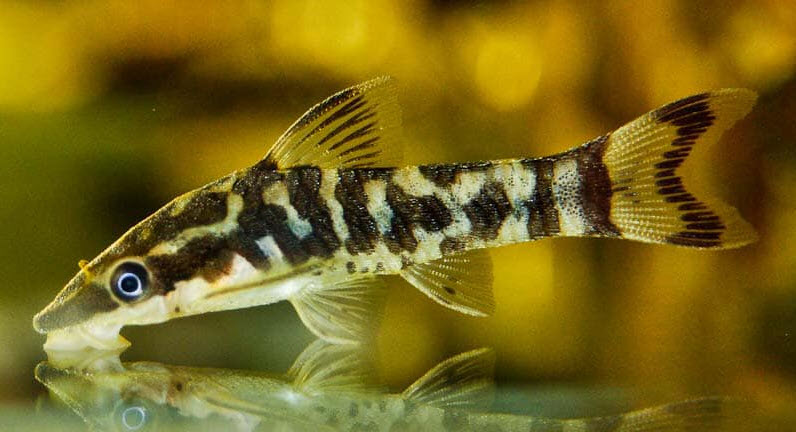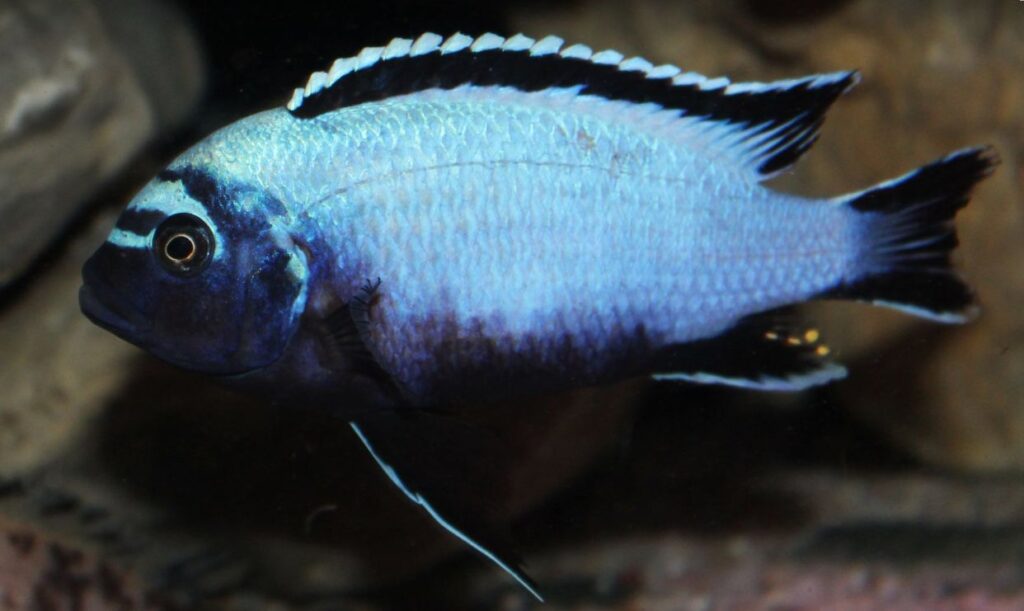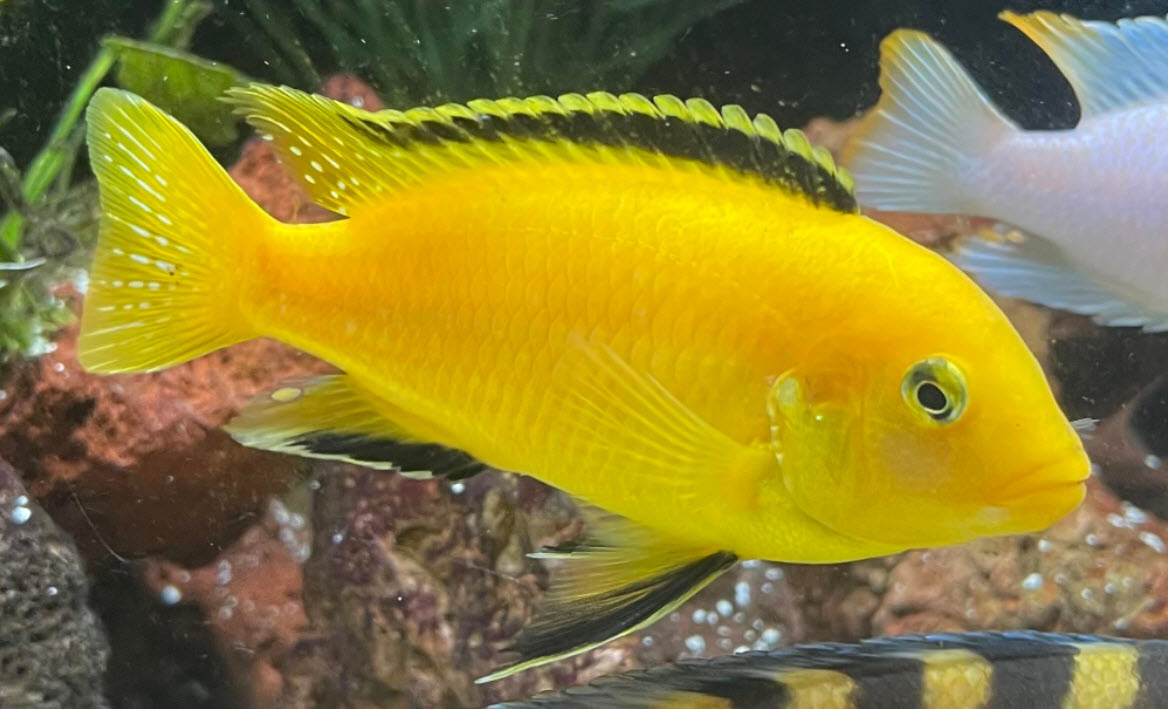The biggest myth with canisters is that the flow through the canister is what is important. That is just plain incorrect. The test below showed that flow has very little effect on the efficiency of a canister.
Test of Flow Rate in Canisters
Canisters are normally rated by their flow rate. Supposedly if you double the flow rate you double the filtering capacity of the canister. A canister with a flow rate of 250 GPH can supposedly filter a 50 gallon tank while 500 GPH can supposedly filter a 100 gallon tank. A test of this hypothesis was set up.
Abstract
A test of the ammonia oxidizing capability of canister filter flow was undertaken. One set of aquariums was filtered with a canister loaded completely with filter media. One set of aquariums was filtered with two canisters half loaded with filter media. There was little difference in their ammonia oxidizing capability despite there being at least two times increase in flow rate (GPH for the whole aquarium) in the set of aquariums with two half filled filters on them. This proves that flow rate is NOT important when rating filters.

Ammonia Oxidation Test Results
Ammonia was added to tanks with various filters. The resulting ammonia levels were measured three days later, and the amount of ammonia added adjusted according to the measured ammonia level. These are the results reported as the number of milliliters ammonia solution added on the day noted:
| Filter | 15 days | 30 days | 45 days | 60 days | 75 days | 90 days |
|---|---|---|---|---|---|---|
| Normal flow | 4 | 8 | 16 | 16 | 16 | 32 |
| Normal flow | 2 | 8 | 8 | 32 | 16 | 32 |
| 2x flow | 4 | 16 | 8 | 16 | 32 | 32 |
| 2x flow | 4 | 8 | 16 | 32 | 32 | 16 |
Discussion of Results
The average ammonia addition to the normal flow canister aquariums averaged 15.8. The average ammonia addition to the 2X flow canister aquariums was 18. The 9% increase in the oxidation rate is far from the 100% conventional wisdom dictates. It is so low that it is statistically insignificant per JMP computer software. This proves that flow only has a small effect on canister efficiency.

Test Procedure
To test the ammonia oxidizing capability of various aquarium canister filter flow rates four forty-gallon aquariums were set up. A mixture of various media the author had lying around (Biohome ultimate, De*Nitrate, Matrix and ceramic rings) was thoroughly mixed together. Two canisters had all three trays filled with this media. Four canisters were half filled with this media. Each tray had one half of the tray obstructed with a plastic bag full of media in such a way that the water was forced through the other half of the tray with loose media in it. This was so that the velocity of the water through the media was doubled.
A cup of brown water from the squeezing of several established sponge filters to each aquarium. The ammonia level was measured every three days and added ammonium nutrient solution accordingly daily. The test ran for 90 days.
If the ammonia test was at or below 0.5 ppm. the number of milliliters added was doubled. If the ammonia test was at or below 4.0 ppm. the number of milliliters was kept the same. At or above 8.0 ppm of ammonia, the number of milliliters was cut in half.

Each of the aquariums was filled to the brim with 8.1 pH well water. The level was only topped off when it dropped. The media was not cleaned during the test nor was the water changed. Nitrates and nitrites were not measured nor was the pH measured (8.1 pH well water will not vary much in pH).
Each aquarium had four ppm of ammonia added every day for the first eight days to start the cycle. Each aquarium also had one tablespoon mono-calcium phosphate added initially to provide phosphate for the beneficial bacteria.
After nine days, if the ammonia test was at or below 0.5 ppm. the number of milliliters added was doubled. If the ammonia test was between 0.5 ppm and 4.0 ppm. the number of milliliters was kept the same. Above 4.0 ppm and above of ammonia, the number of milliliters was cut in half. The ammonia level was measured every three days. Ammonium/ammonia nutrient solution was added accordingly daily. The test was run for 90 days.

Test Equipment:
- 4 forty-gallon Aquariums
- Well water (pH of 8.1)
- Ammonia nutrient solution:
- 200 grams BASF Ammonium Chloride
- 500 milliliters Frey Scientific Ammonium Hydroxide, 6 Molar
- Filter media consisting of Biohome, Matrix and ceramic rings, all mixed together
- Six SunSun HW303 Canister filters
- Various metric syringes and graduated measuring cylinders

The Filter Media for Aquarium Canister Filters
Popular mythology is that the flow through a canister is the most important variable in selecting and setting up an aquarium canister filter. This is just plain false, as the above test shows. The two most important variables are the volume of filter media the canister can hold and what media is selected for the canister.
A popular YouTube forum moderator asked what type of media canister filter users put in their canisters on his YouTube channel. Most canister users say they had three or more types of media in the trays (one respondent had six different types of media!). Apparently, they feel each biomedia will have an advantage. All biomedia do the same thing, they just do it with varying degrees of success. This use of a large variety of media is just somewhat humorous but EVERYONE does it.
If you use a canister filter, don’t put the “normal” biomedia in these trays (ceramic rings, bioballs, ceramic balls, activated carbon, etc.). If one loads a canister with the “normal” media which comes with it the canister is a very poor biofilter.
Instead use K1 type extruded plastic biomedia, pot scrubbers or foam inserts rather than the conventional stuff. These media are just much superior for biofiltration. A canister filter loaded with urethane foam (“sponge”), pot scrubbers or K1 extruded plastic media is an excellent filter.

A test of ammonia oxidizing capability of various filter media was run. The first number, the “efficiency” is the average ammonia oxidizing that 15 cubic inches of media accomplished over a 90-day period. The second number is the “effective” surface area in square feet per cubic feet calculated from that test. The third number is the effective surface area in square feet per cubic feet calculated by simple mathematics. The correlation between the test results and the calculated surface area is very significant and means the testing was accurate.
| Media | “Efficiency” from two tests * | “Effective” surface area ft²/ft³ | ft²/ft³ from math | “Effective” surface area m²/m³ | m²/m³ from math |
|---|---|---|---|---|---|
| Fluidized K1 media | not tested | 600 | na | 1980 | na |
| 30 PPI foam | 17 | 340 | 400 | 1122 | 1320 |
| Pot scrubbers | 14 | 280 | 80 | 924 | 264 |
| Static K1 media | 13 | 260 | 200 | 858 | 660 |
| 20 PPI foam | not tested | 220 | 180 | 726 | 594 |
| Aquarium gravel | 6 | 120 | 120 | 396 | 396 |
| Blue Matala pads | 5 | 100 | 120 | 330 | 396 |
| Eshoppe bioballs | 5 | 100 | 60 | 330 | 198 |
| ¼ to ½ inch lava rocks | 3 | 60 | 60 | 198 | 198 |
| Matrix | 3 | 60 | 30 | 198 | 99 |
| Biohome ultimate | 2 | 40 | 30 | 132 | 99 |
| Ceramic rings | 2 | 40 | 40 | 132 | 132 |
| * average ammonia oxidizing that 15 cubic inches (245,81 cm³) of media accomplished over a 90-day period | |||||
The higher the number the better the media. So foam is the best static media and ceramic rings are the worst media for canisters by this test and by math calculations. Since foam must be exactly cut to the proper size to prevent flow around pot scrubbers and K1 are much easier to use successfully.

.

.
The details of this test can be found at this link:

Math Involved in Rating Aquarium Canister Filters
It is important to look at the volume of the canister filter. Some canisters have less than a liter (approximately one quart) of volume while some have 10 liters (close to three gallons). Suffice to say the volume of the canister should be maximized.
Unfortunately the good websites which gave one the volume of a canister for review purposes have all disappeared from a Google search in favor of the many for-profit review sites which make a commission on each link clicked on which produces a sale.
In order to define the size of the canister now-a-days one must multiply the height x width x depth to get the volume in cubic inches. Then one needs to apply a correction factor to account for all the volume reductions inherent in the designs.
A SunSun Hw304B canister is 9 inches long, 9 inches wide and 15.5 inches high = 1,255 cubic inches or 0.72 cubic feet. The published filter media capacity of this canister was 9 liters or 0.317 cubic feet. 0.317 divided by 0.72 = 44%. Thus in order to get the volume of any canister one must do the math and multiply the height by the width by the length of the canister. Then multiply this by roughly 44% to get the “real” volume of the filter media.

Calculating the Ability of a Canister to Filter
One can calculate the capacity of a canister quite easily. One needs about 5 square foot of biomedia surface for every pound of fish in an aquarium in order to do a good job of ammonia oxidation. One needs about 100 square foot of biomedia for every pound of fish in an aquarium in order to get healthy, crystal clear water. These numbers have extensive support both by testing done here-in and from the literature.

As an example, say one has a SunSun Hw304B canister with 9 liters or 0.317 cubic feet of filter media. Say this is filled with filled with only ceramic rings. One will have have 40 ft2/ft3 X 0.317 ft3 or 12.7 square feet. In turn, 12.7 square feet divided by 100 square feet is 0.127 pounds or 0.127 x 454 grams = 58 grams. So with this canister filter and ceramic rings, IF ONE WANTS CRYSTAL CLEAR , HEALTHY WATER, you can stock 58 grams of fish. If you look at the metabolic weights of the fish below this means ONLY roughly 3 three inch platies!
| Length Inches | Length Centimeter | Weight Grams | Metabolic Weight Grams |
|---|---|---|---|
| 1 | 2.54 | 0.32 | 1 |
| 1.25 | 3,18 | 9.64 | 2 |
| 1.5 | 3.81 | 1.1 | 3 |
| 1.75 | 4,44 | 1.8 | 5 |
| 2 | 5.08 | 2.5 | 7 |
| 2.25 | 5,72 | 3.73 | 10 |
| 2.5 | 6.35 | 5.12 | 14 |
| 2.75 | 6,98 | 6.81 | 18 |
| 3 | 7.62 | 8.86 | 22 |
| 4 | 10.16 | 21 | 47 |
| 5 | 12.7 | 41 | 82 |
| 6 | 15.24 | 70.5 | 113 |
| 7 | 17.78 | 112 | 140 |
| 8 | 20.32 | 167 | 167 |
| 9 | 22.86 | 239 | 239 |
| 10 | 25.4 | 328 | 328 |
| 12 | 30.48 | 581 | 581 |
What if we change from ceramic rings to pot scrubbers? If one has a SunSun Hw304B canister filled with pot scrubbers you will have the capacity of 280 ft2/ft3 X 0.317 ft3 or 89 ft2 or 0.89 pounds of fish. That’s 404 grams of fish or about 18 three inch platies. 18 versus 3 fish, that is a huge difference.
Let’s compare them:
Plastic Pot Scrubbers – 18 platies
Ceramic Rings, Lava Rock – 3 platies
This is just mind-blowing data! But remember, these numbers only apply for CRYSTAL CLEAR, HEALTHY WATER.

What about ONLY AMMONIA OXIDATION? Let us say we have a SunSun Hw304B canister which is filled with each of these media (9 liters or 0.317 cubic feet). This canister could support this number of ten inch Oscars (328 grams metabolic weight) or five inch mbuna (82 grams metabolic weight) for ONLY ammonia oxidation (5 square feet per pound):
30 ppi foam 30 120
Pot scrubbers 25 99
Static K1 Media 23 91
Matrix 5 21
Lava Rock 4 14
Ceramic Rings 4 14
This is just incredible data! It shows just how important the filter media is in an aquarium.

Note that this is only for ammonia oxidation. If one wants healthy fish and crystal clear water the numbers become:
30 ppi foam 1 6
Pot scrubbers 1 5
Static K1 Media 1 5
Matrix 0 1
Lava Rock 0 0
Ceramic Rings 0 0
These numbers will get a lot of push back. I can hear the “But I have crystal clear water with 50 five inch mbuna and a canister filled with ceramic rings” loud and clear. Then I ask them: “If you look down the length of the aquarium and see fish at the far end, does it look like they are floating in air?” And I never get a reply. This is because people do not understand the term “crystal clear”. It means VERY VERY clear water.

Other Filter Media Used in Canisters
Using polyester floss (“Polyfil”, the material found in some pillows) in these trays in a canister can create problems. Floss can create too large a pressure drop for the low-pressure canister pumps to handle. Any mechanical filtration pads in a canister filter requires taking apart a canister every 1 to 2 weeks to clean the mechanical media. This is a time consuming pain which incurs the constant threat of leaks.
For mechanical filtration with canisters one should use small filter inlet sponges. These work quite well on canisters. Cory at Aquarium Coop has some very good products along this line.

Cleaning Canisters
It is important when cleaning canister filters to never clean the media thoroughly. Don’t clean the large biomedia (K1, bioballs, ceramic rings, etc.) at all. Clean the urethane foam very lightly without squeezing it. The “brown gunk” in the filter media isn’t feces, it is beneficial bacteria. “Beneficial bacteria ain’t pretty”.
Some people clean their canisters thoroughly on a regular basis (Fluval recommends once a month). This is a big mistake. Instead put a flow meter (something like the Nxtop 2-20GPM Water Tube Design Liquid Flowmeter Measure 1″PT Dia Input $32.19 USD) on the canister outflow. Then only clean the canister when one notice a significant loss of flow.
.

In my over filtered aquariums which have canisters I NEVER clean the canisters. The flow on them NEVER slows down. I one looks inside the filters the foam and the K1 media have very little brown gunk in them. This is probably since I feed a very high protein food which decomposes completely in the filters.
Every time one cleans a canister there is the chance the canister will spring a leak. For this reason many avoid opening their canisters save only when the flow slows down. Others like to put their canisters in tubs with leak monitors which give an alarm when a leak occurs.

O-rings
And, by the way, some well meaning but ill-informed commentators on social media say that to stop the leaks in a cartridge filter, lubricate the O-ring with standard grease or petroleum jelly. O-ring manufacturers say to never, ever do this. It softens the O-ring and the O-ring becomes very vulnerable to shearing and leaks. All the O-rings used in aquariums are made of cheap rubbers which require a special high cost silicone lubricant. This silicone grease is used in scuba diving, so look for it on Amazon under that category. Fluval sells a silicone grease for O-rings.
Aeration
Aeration with a canister can be tricky. To get good aeration, the water return needs to create a turbulent surface current (“choppy” waves) in the aquarium without creating a problem for the fish. The “best” arrangement is to have the outlet about two inches below the surface of the water. Then angle the flow upward with a fan nozzle at about a 20 degree angle. This will create the largest possible amount of “choppy waves” and good aeration.
We do not recommend spray bars. Spray bars slow down the flow of water by creating a high back pressure. And they are very noisy if put above the waterline.

Note that because of the amount of foam in a Fluval FX filter and because of the way the water flows, the FX series of canisters are my favorites (and I’m not being paid in any way to say that!). For information on the Fluval FX canister filters go to the following link:


